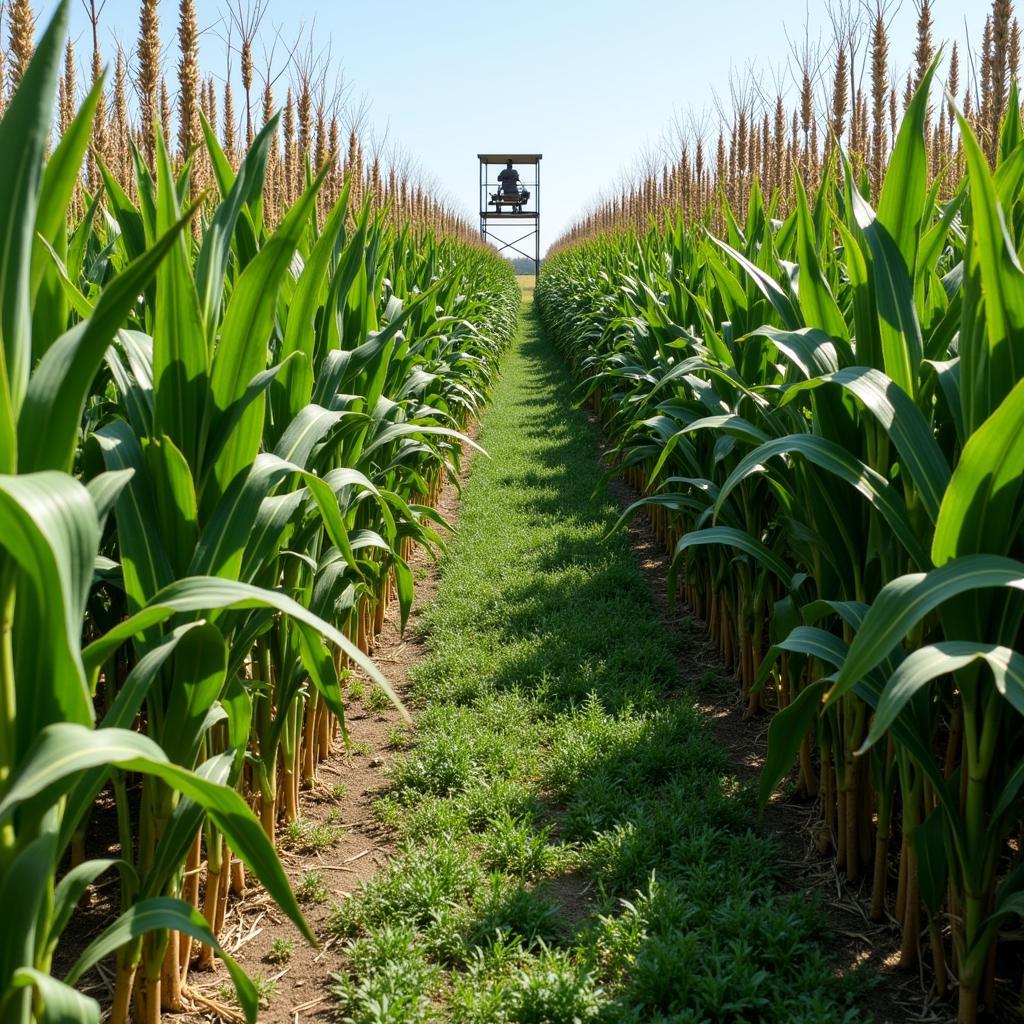Corn Food Plots are a popular choice for hunters looking to attract deer and other wildlife. They offer a readily available and attractive food source, especially during the fall and winter months. But establishing and maintaining a successful corn food plot requires careful planning and execution. This guide will delve into the essential aspects of creating a thriving corn food plot, from seed selection and soil preparation to maintenance and hunting strategies.
Understanding the Benefits of Corn Food Plots
Why choose corn for your food plot? Corn offers several advantages. It’s a high-energy food source, crucial for wildlife during colder months when other food sources are scarce. The tall stalks also provide cover, making deer feel more secure. Furthermore, corn is relatively easy to grow and readily available from suppliers like those found on our corn seed for food plots page.
Selecting the Right Corn for Your Food Plot
Not all corn is created equal. Choosing the right variety is crucial for a successful corn food plot. Consider factors like maturity date, drought tolerance, and disease resistance. Opt for varieties specifically designed for wildlife food plots, as they are bred for higher nutritional value and attractiveness to deer. You can explore options at our corn seed for deer food plots page.
Key Considerations for Corn Seed Selection
- Maturity Date: Choose a variety that will mature before the first frost in your area.
- Drought Tolerance: If you live in a dry climate, select a drought-tolerant variety.
- Disease Resistance: Look for varieties resistant to common corn diseases.
- Nutritional Content: Opt for varieties with high protein and energy content.
Preparing the Soil for Your Corn Food Plot
Soil preparation is essential for a productive corn food plot. Test your soil to determine its pH and nutrient levels. Corn thrives in well-drained soil with a pH between 6.0 and 7.0. Amend the soil as needed with lime or fertilizer. Tilling or disking the soil will help break up compacted areas and improve drainage.
Planting Your Corn Food Plot
Once the soil is prepared, it’s time to plant. The optimal planting time for corn is typically in the spring, after the last frost. Plant the seeds at the recommended depth and spacing for your chosen variety. A food sprayer can be invaluable for applying herbicides and pesticides to control weeds and pests.
Planting Techniques for Optimal Growth
- Broadcast Seeding: Spreading seed evenly over the plot.
- Drill Planting: Planting seeds in rows using a planter.
- No-Till Planting: Planting seeds directly into the soil without tilling.
 A mature corn food plot ready for hunting season
A mature corn food plot ready for hunting season
Maintaining Your Corn Food Plot
After planting, regular maintenance is essential. Weed control is crucial, especially during the early stages of growth. Monitor for pests and diseases and take appropriate action if necessary. Consider using a fertilizer to ensure the corn receives adequate nutrients. Browse our best deer food plots for more inspiration and ideas.
Hunting Strategies for Corn Food Plots
Corn food plots can be highly effective for attracting deer. Place hunting stands or blinds strategically around the perimeter of the plot. Hunt during early morning and late evening hours when deer are most active. Scent control and quiet movement are essential for success. Consider planting specific corn food plot seed to maximize attraction.
Conclusion
Creating a successful corn food plot requires planning, effort, and the right knowledge. By following the guidelines outlined in this guide, you can establish a thriving corn food plot that will attract deer and enhance your hunting experience. Remember that proper seed selection, soil preparation, and ongoing maintenance are crucial for maximizing the benefits of your corn food plot.
FAQ
- When is the best time to plant a corn food plot?
- What type of corn is best for deer?
- How do I control weeds in my corn food plot?
- What are the best hunting strategies for corn food plots?
- How much corn seed do I need for my food plot?
- What is the ideal pH for growing corn?
- How often should I fertilize my corn food plot?
If you need further assistance, please contact us at Phone Number: 02437655121, Email: minacones@gmail.com or visit us at 3PGH+8R9, ĐT70A, thôn Trung, Bắc Từ Liêm, Hà Nội, Việt Nam. We have a 24/7 customer support team.